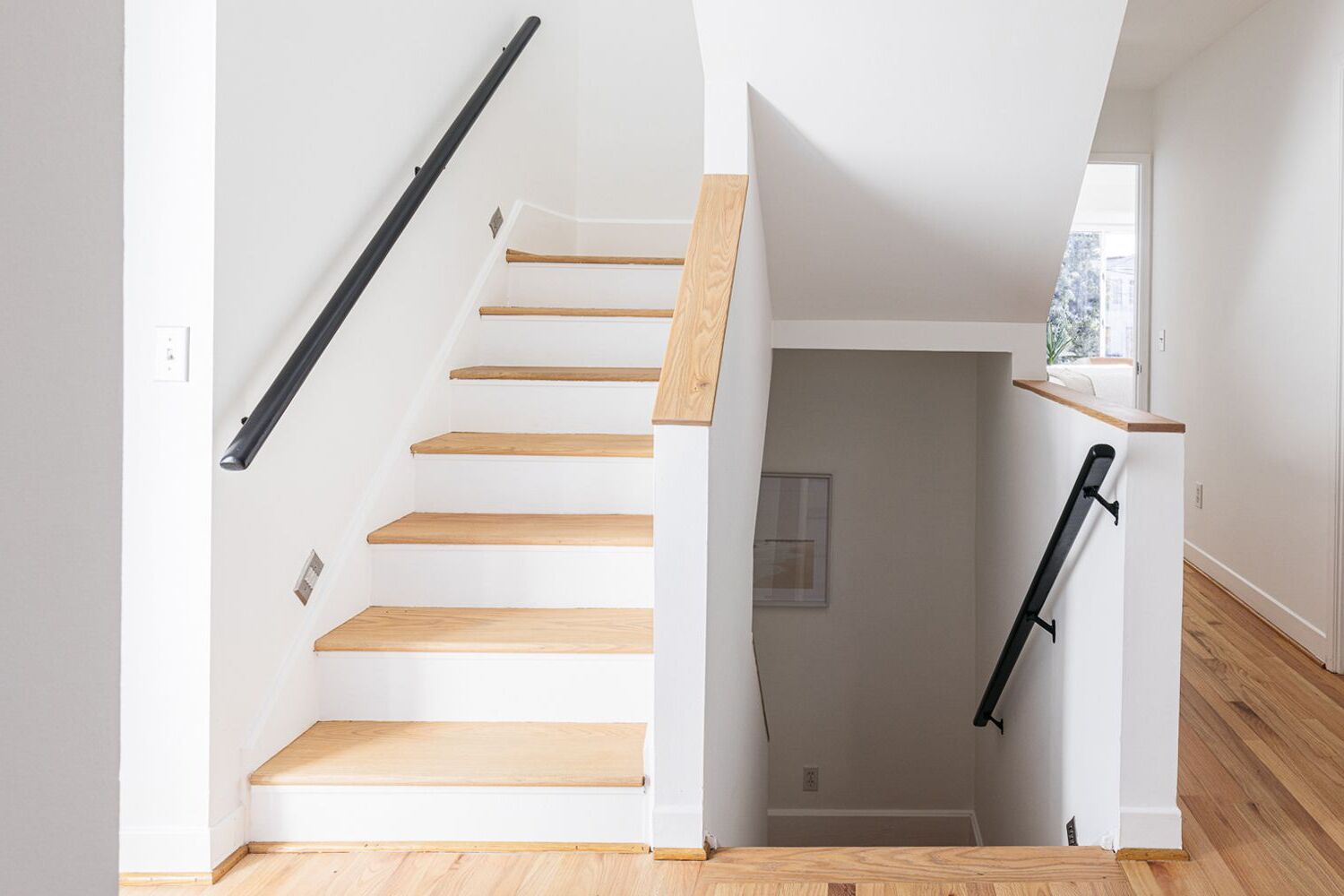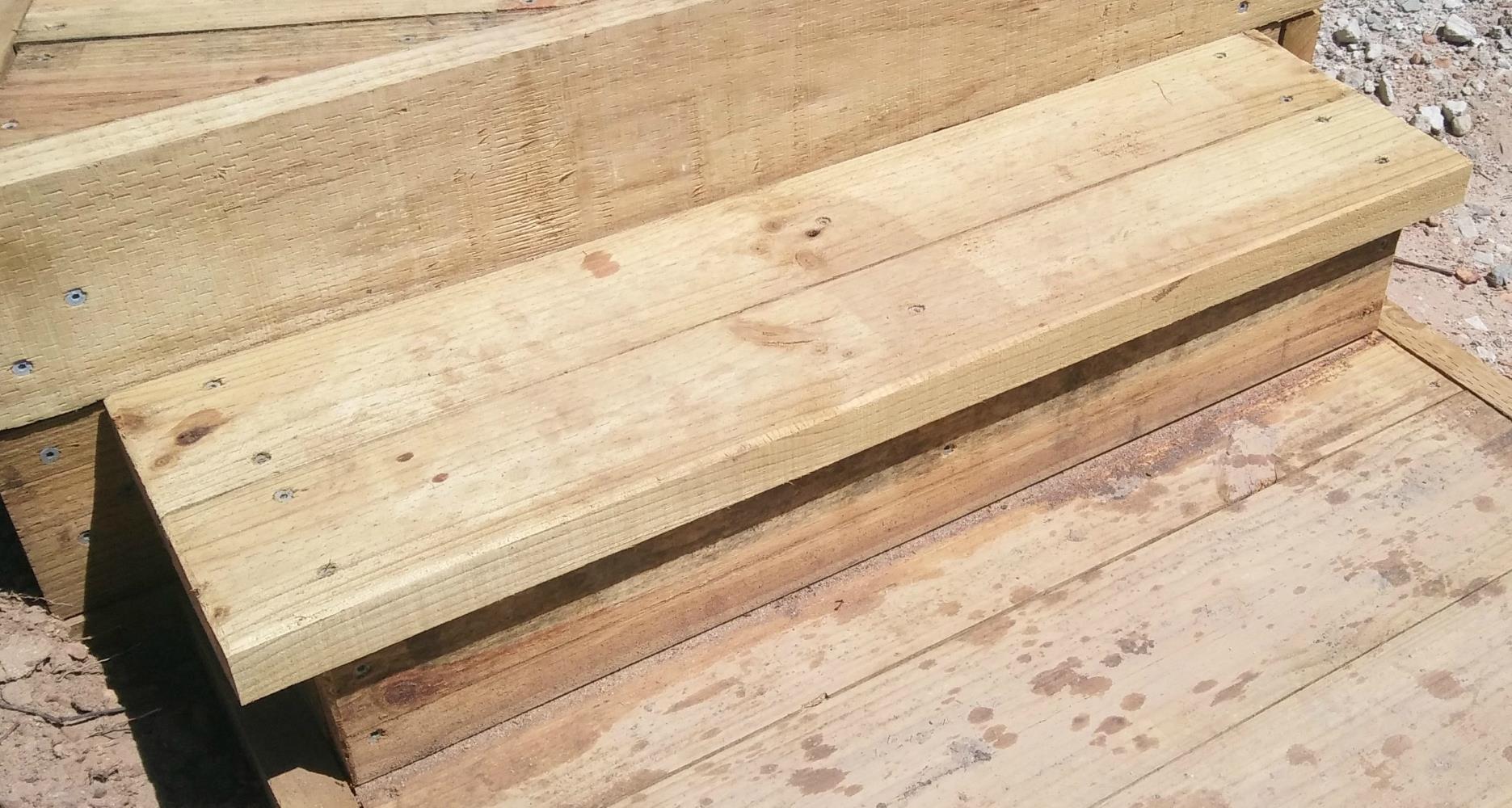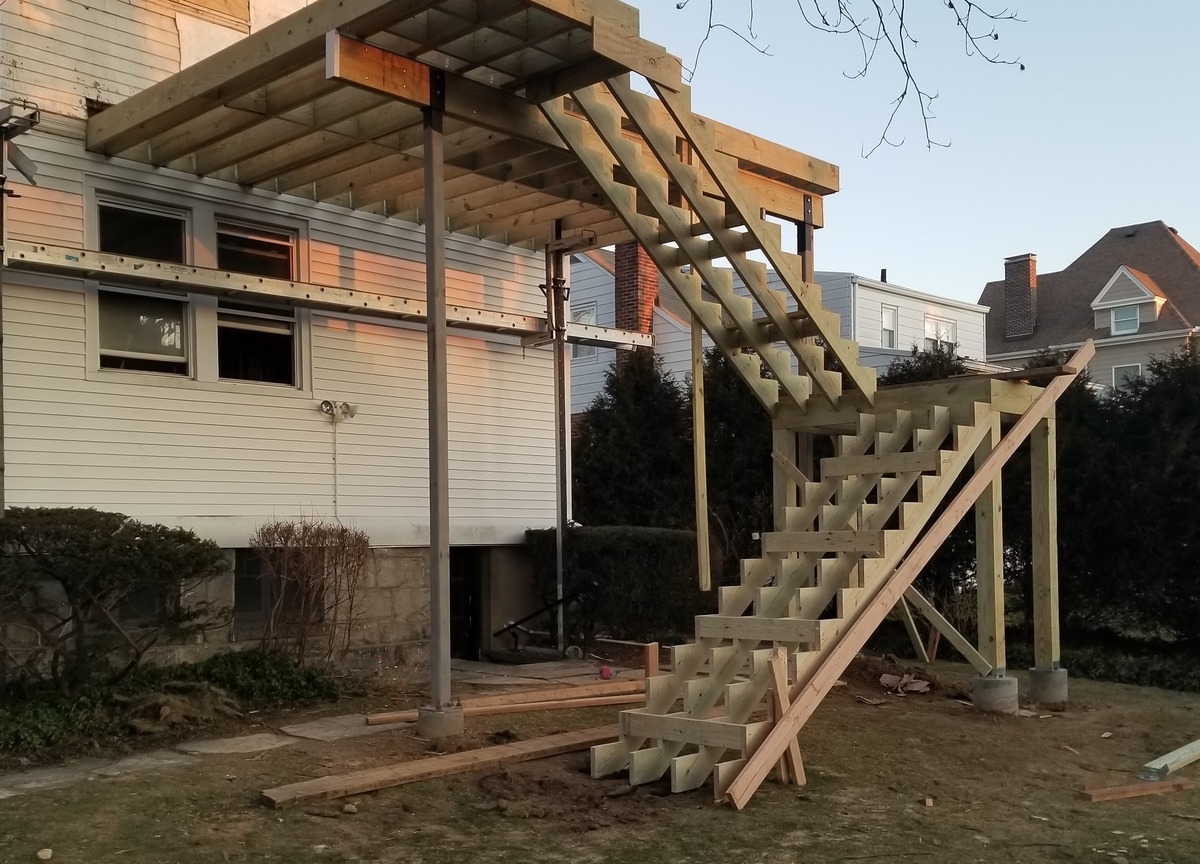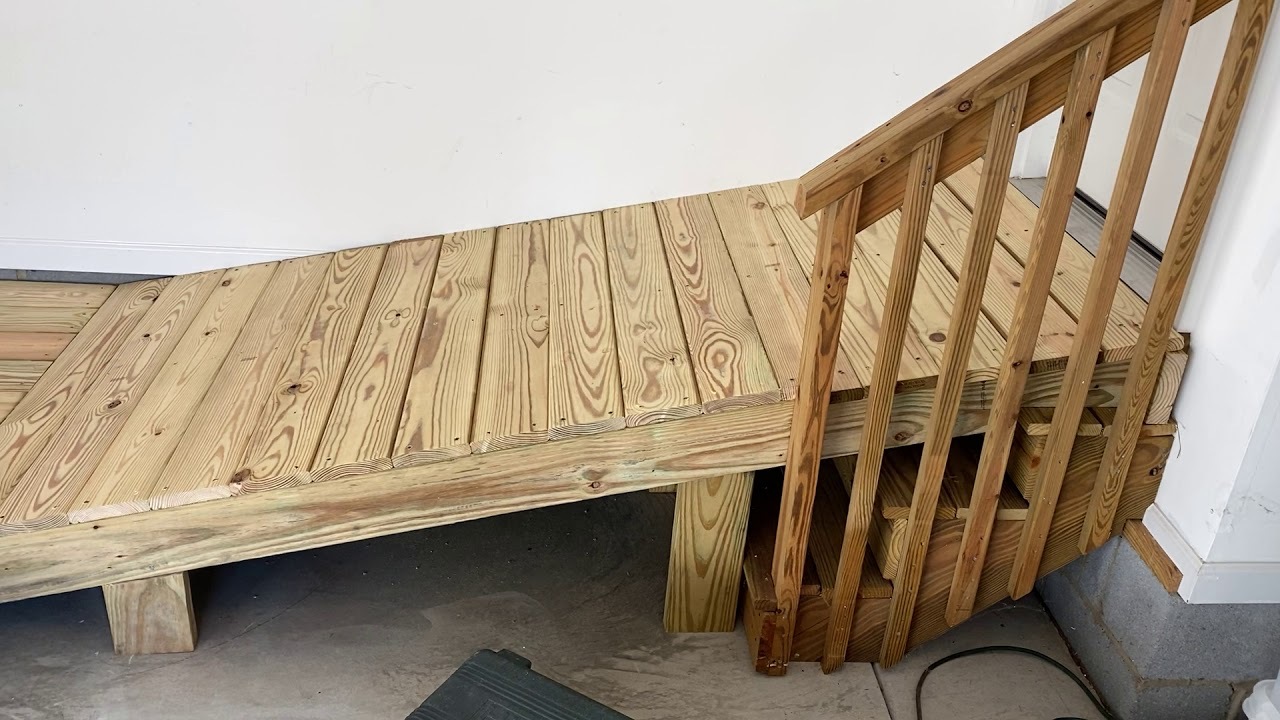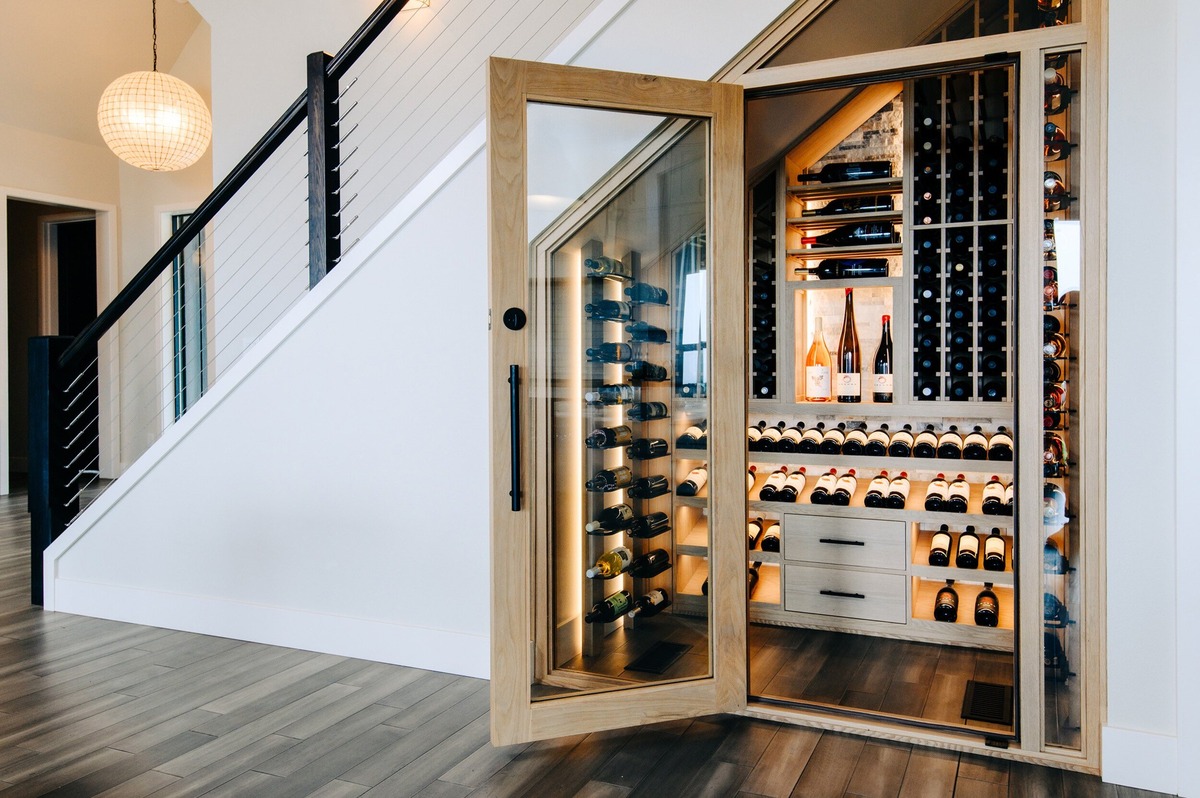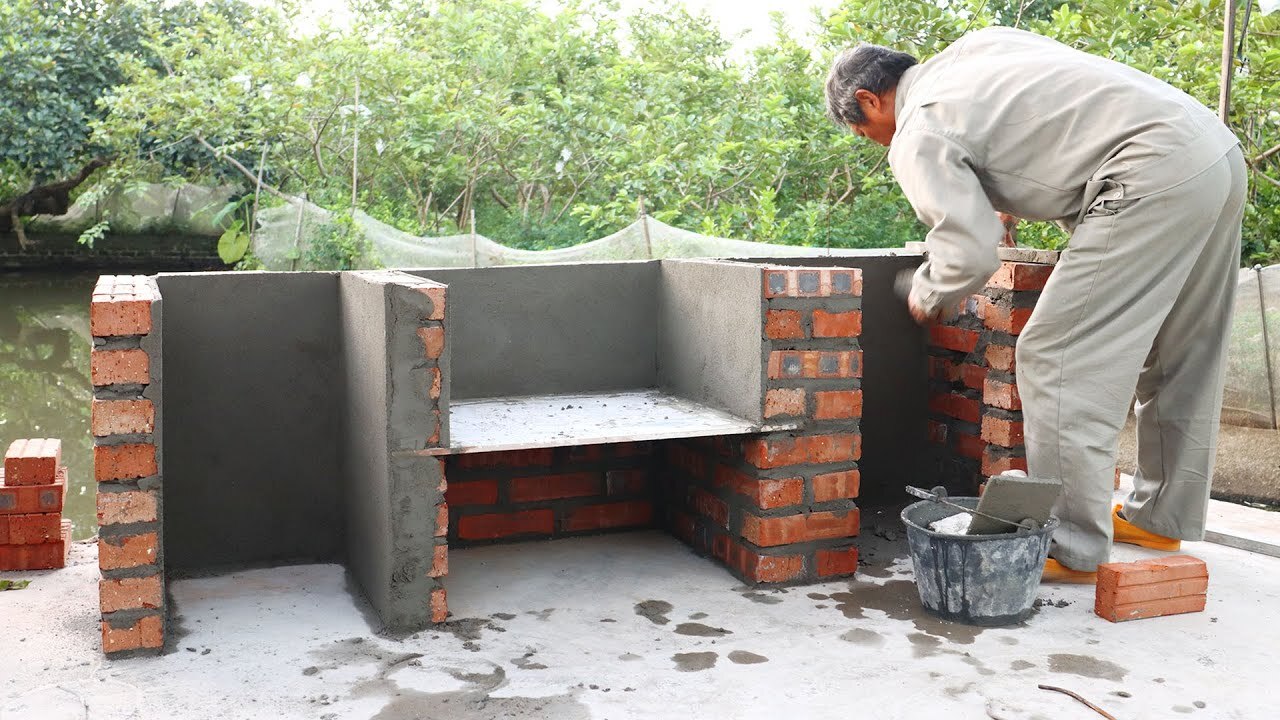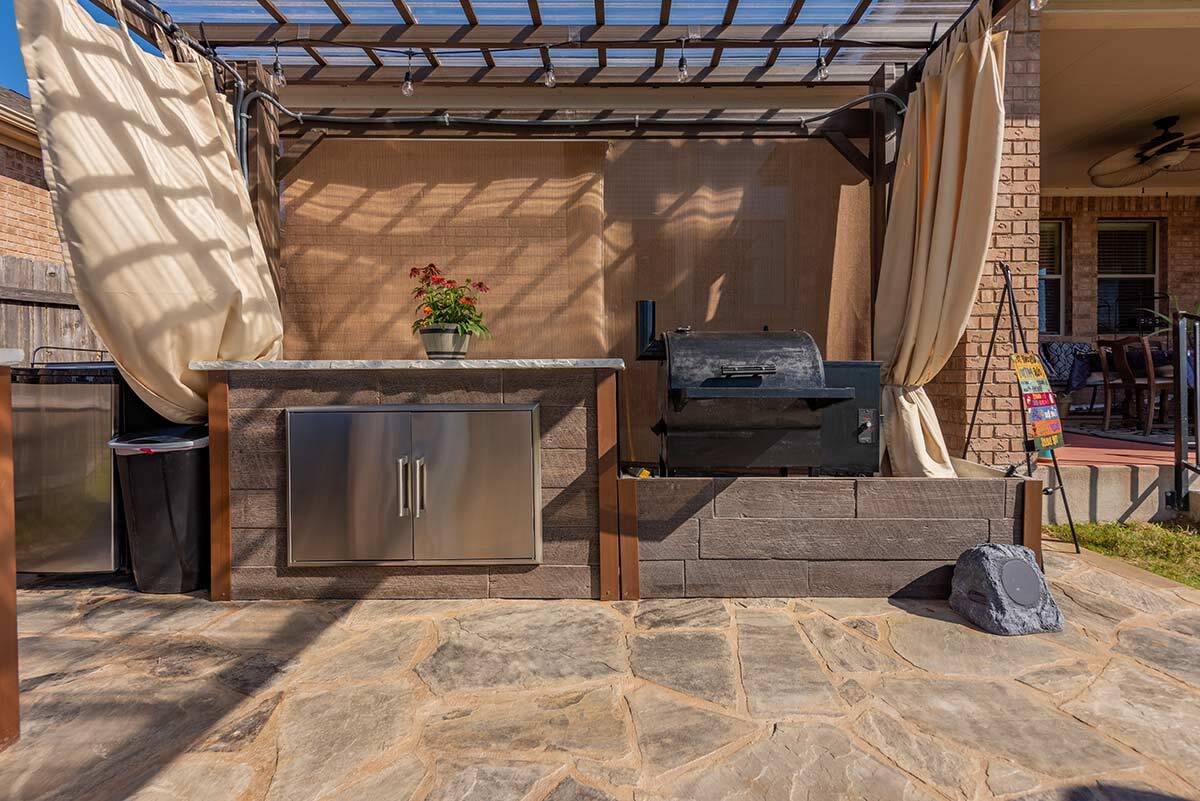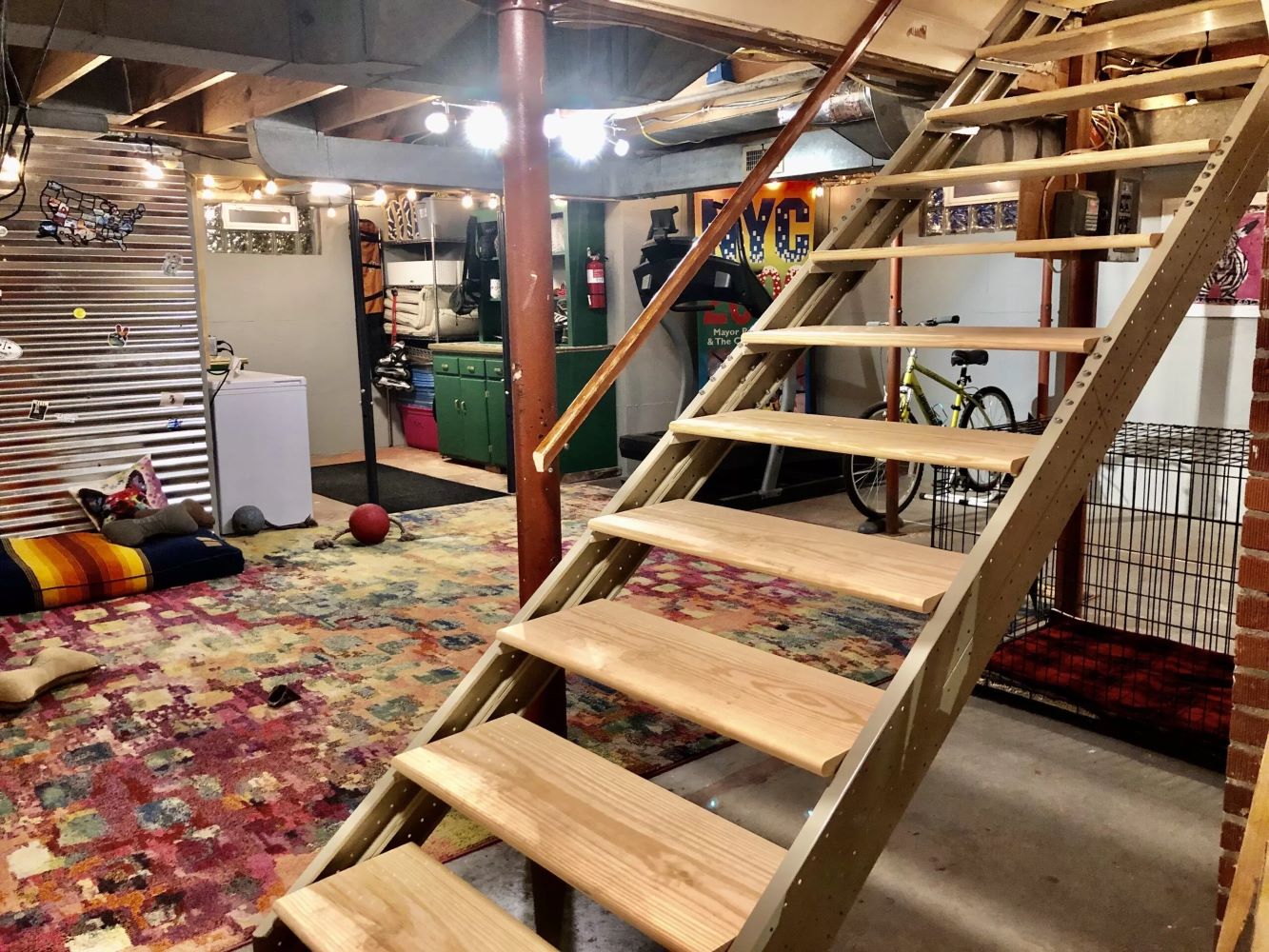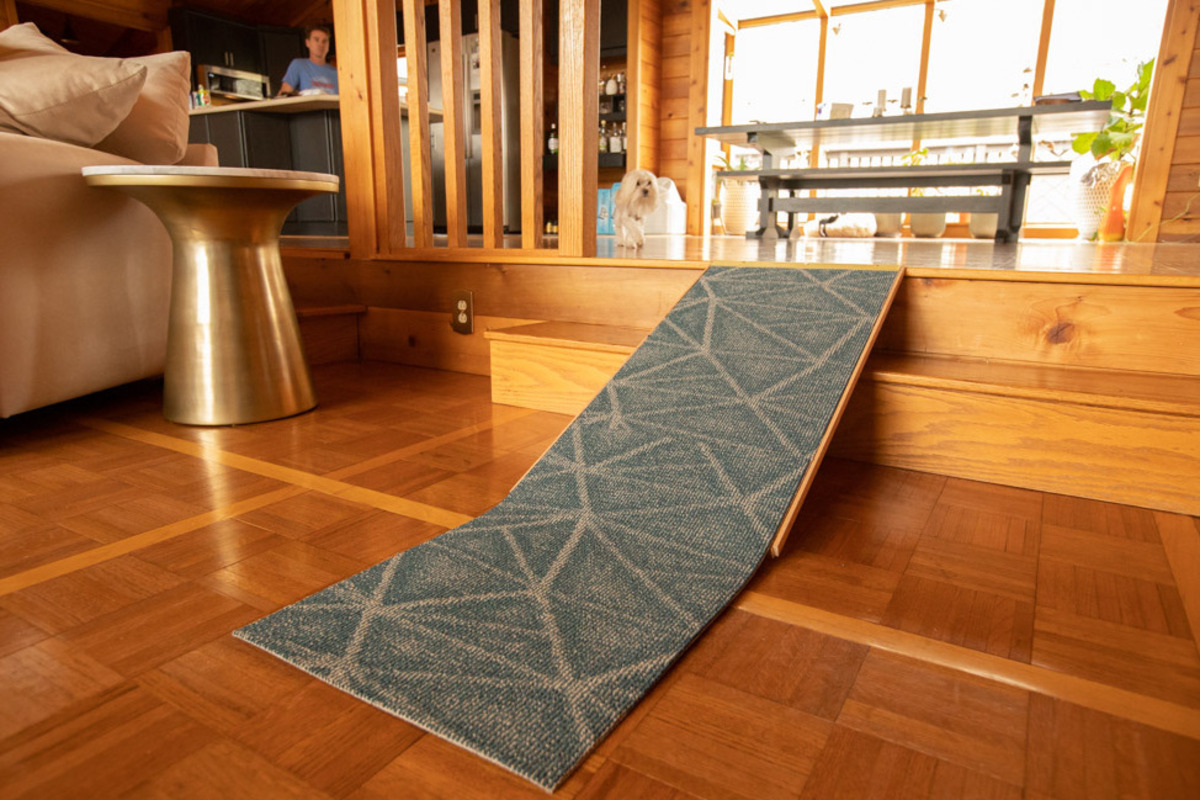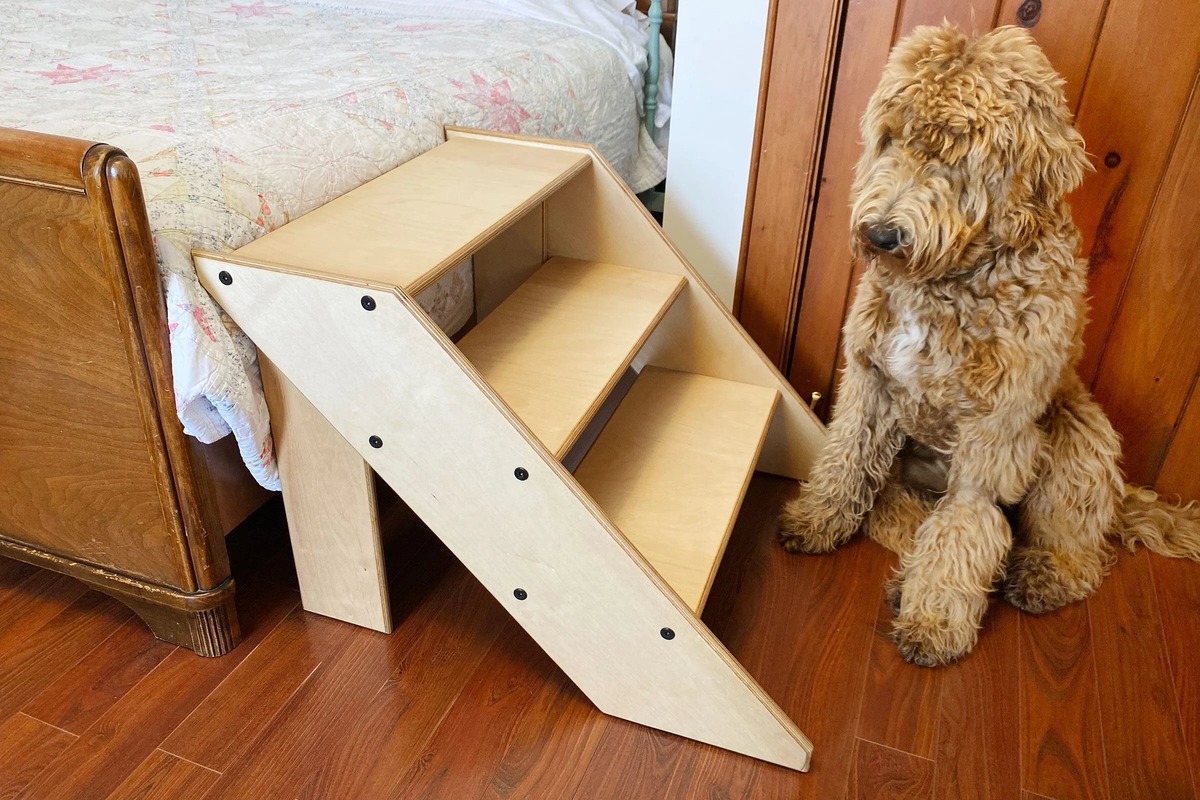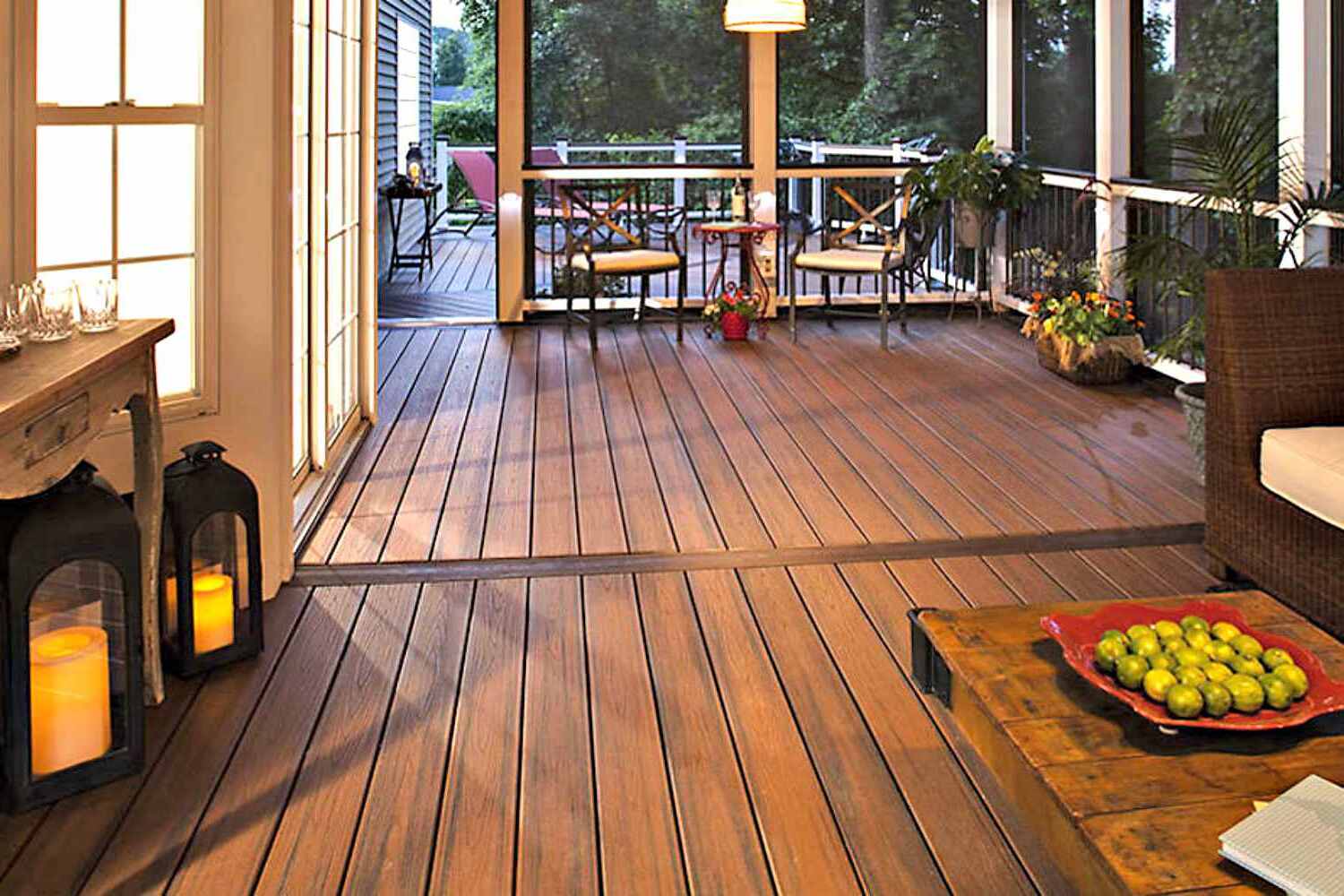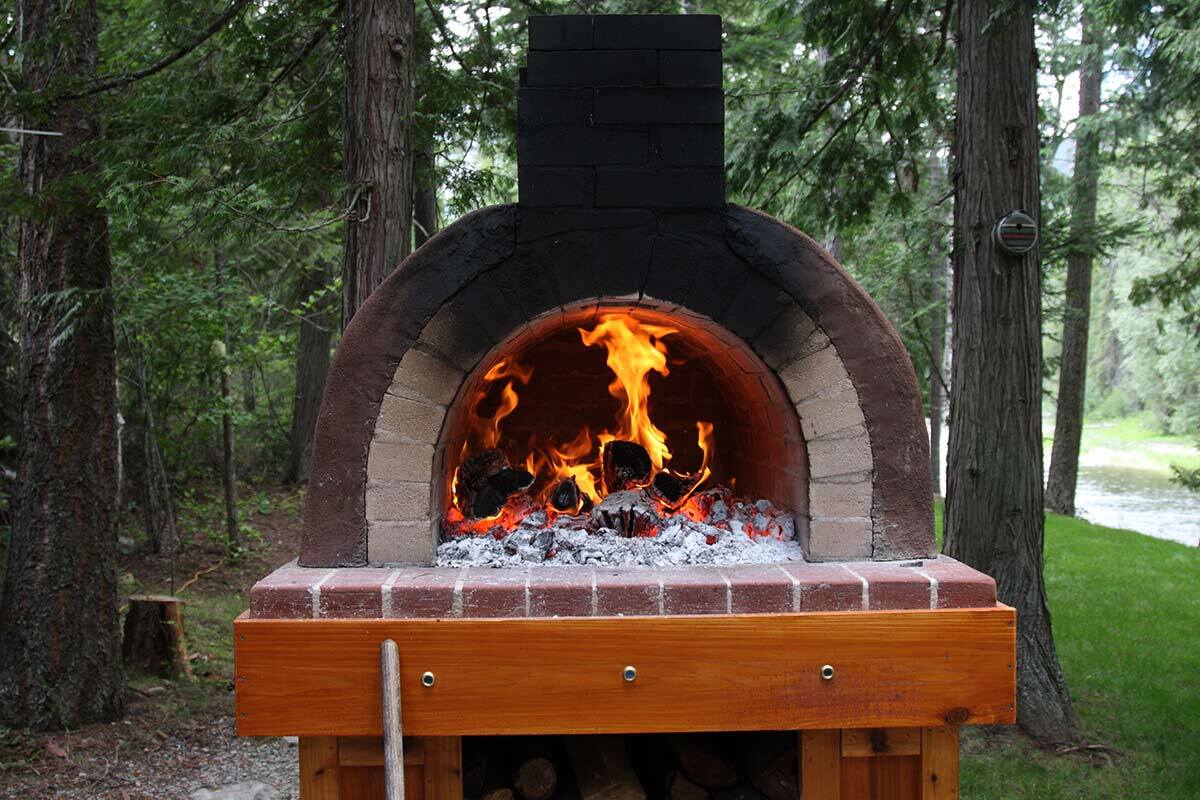Home>Create & Decorate>DIY & Crafts>How To Build Outdoor Stairs
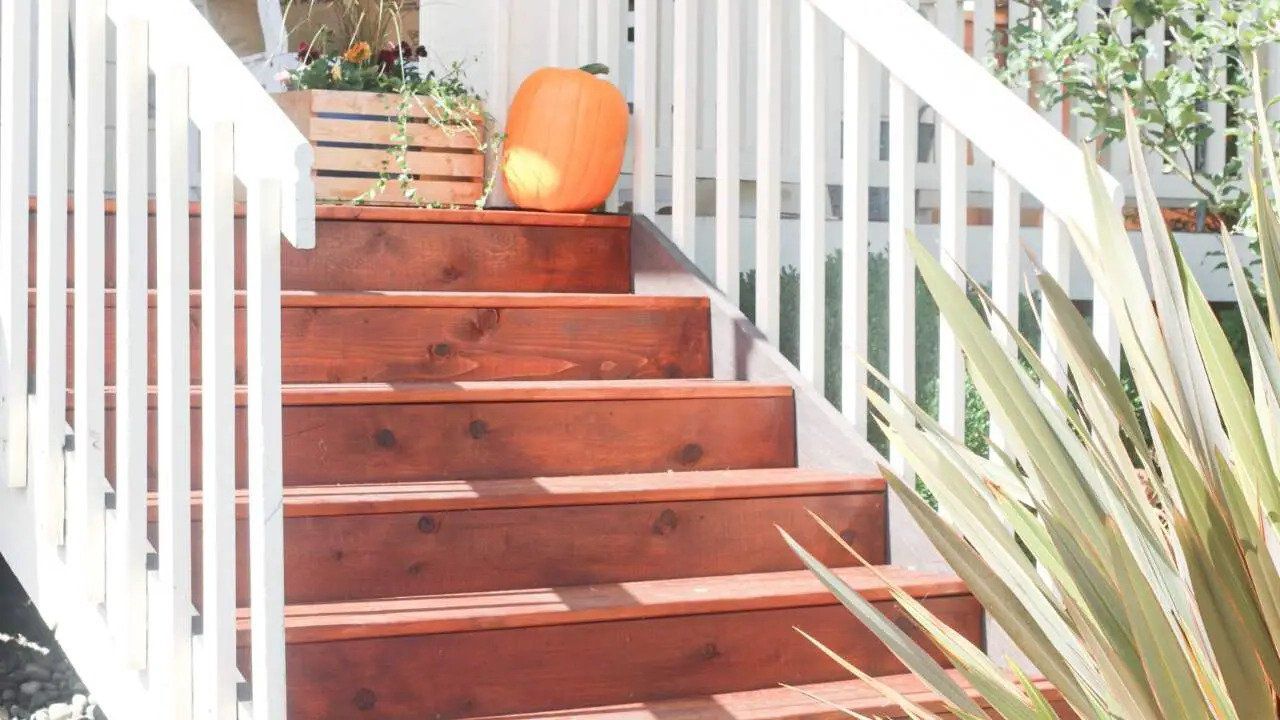

DIY & Crafts
How To Build Outdoor Stairs
Published: April 9, 2024

Senior Editor in Create & Decorate, Kathryn combines traditional craftsmanship with contemporary trends. Her background in textile design and commitment to sustainable crafts inspire both content and community.
Learn how to build outdoor stairs with our easy DIY & Crafts guide. Create a safe and stylish staircase for your outdoor space. Step-by-step instructions and tips included!
(Many of the links in this article redirect to a specific reviewed product. Your purchase of these products through affiliate links helps to generate commission for Twigandthistle.com, at no extra cost. Learn more)
Introduction
So, you've decided to take on the challenge of building outdoor stairs. Whether you're looking to add a stylish entrance to your home, create a pathway to your garden, or connect different levels of your outdoor space, building outdoor stairs can be a rewarding and practical DIY project. In this guide, we'll walk you through the step-by-step process of building outdoor stairs that are not only functional but also enhance the aesthetic appeal of your outdoor living area. From planning and designing to choosing the right materials and putting on the finishing touches, we've got you covered. Let's dive in and get those outdoor stairs ready for action!
Read more: How To Build Deck Stairs
Planning and Designing Your Outdoor Stairs
When it comes to building outdoor stairs, the first step is careful planning and designing. Here's how to get started:
-
Measure and Assess: Begin by measuring the height and width of the area where the stairs will be installed. Assess the slope of the ground to determine the number of steps needed and the angle of the staircase.
-
Local Building Codes: Check with your local building codes to ensure compliance with regulations regarding the dimensions, materials, and safety requirements for outdoor stairs.
-
Design Considerations: Consider the overall design and style of your outdoor space. Are you looking for a modern, sleek staircase or a more rustic, natural look? The design should complement the existing architecture and landscape.
-
Safety and Accessibility: Keep safety in mind when designing the stairs. Ensure the steps are of uniform height and depth to prevent tripping. If you have family members with mobility issues, consider incorporating a gentle slope or wider steps for easier access.
-
Materials and Budget: Determine the materials you'll use for the stairs and railings. Consider the durability, maintenance, and cost of materials to stay within your budget.
-
Sketch and Plan: Create a detailed sketch or plan of the staircase, including dimensions, materials, and any additional features such as landings or handrails. This will serve as a guide during the construction phase.
By carefully planning and designing your outdoor stairs, you'll set the stage for a successful and visually appealing addition to your outdoor space.
Choosing the Right Materials
Selecting the right materials for your outdoor stairs is crucial for both durability and aesthetics. Here are some key considerations when choosing the materials:
-
Wood: A classic choice for outdoor stairs, wood offers a natural and timeless look. Cedar, redwood, and pressure-treated pine are popular options due to their resistance to rot and insects. Ensure the wood is properly sealed and maintained to withstand outdoor elements.
-
Composite: For a low-maintenance alternative to wood, composite materials are a great option. They are resistant to rot, warping, and splintering, making them ideal for outdoor use. Composite materials come in a variety of colors and can mimic the look of wood.
-
Concrete: Durable and versatile, concrete is a popular choice for outdoor stairs. It can be formed into various shapes and styles, providing a solid and long-lasting staircase. Concrete can be left as is for a modern look or finished with various textures and colors.
-
Stone: Natural stone such as granite, limestone, or slate can add a touch of elegance to your outdoor stairs. While more expensive than other materials, stone offers unmatched durability and a unique, organic appearance.
-
Metal: Metal stairs are a sleek and modern choice for outdoor spaces. Steel, aluminum, and wrought iron are commonly used for their strength and contemporary aesthetic. Metal stairs can be customized to fit your design preferences and are often paired with other materials such as wood or glass for a striking look.
When choosing the materials for your outdoor stairs, consider factors such as maintenance requirements, climate resistance, cost, and the overall style of your outdoor space. By selecting the right materials, you can ensure that your outdoor stairs not only look great but also stand the test of time.
Preparing the Site
Before diving into the construction of your outdoor stairs, it's essential to prepare the site properly. Here's a detailed look at the steps involved in preparing the site for your outdoor staircase project:
-
Clear the Area: Begin by clearing the area where the stairs will be installed. Remove any debris, rocks, or vegetation to create a clean and level surface for the construction.
-
Mark the Layout: Use stakes and string to mark the layout of the staircase. This will help visualize the placement of the stairs and ensure that they are aligned with the surrounding landscape and structures.
-
Excavation: If the ground is not level, excavation may be necessary to create a flat and stable base for the stairs. Dig out the soil to the required depth, taking into account the thickness of the base material and the height of the risers.
-
Base Material: Once the excavation is complete, add a base material such as gravel or crushed rock to create a solid foundation for the stairs. Tamp down the base material to ensure it is compacted and level.
-
Install Drainage: Consider the drainage needs of the site to prevent water from pooling around the stairs. If necessary, install a drainage system or incorporate slope and grading to direct water away from the staircase.
-
Check for Level: Use a level to check the prepared site for evenness and adjust as needed. A level base is crucial for the stability and longevity of the outdoor stairs.
By thoroughly preparing the site for your outdoor stairs, you'll create a solid foundation for the construction phase and ensure that your staircase is built on stable ground. This careful preparation will contribute to the overall safety and longevity of your outdoor stairs.
Building the Stair Frame
Building the stair frame is a critical step in the construction of outdoor stairs. The stair frame provides the structural support for the steps and ensures the overall stability and safety of the staircase. Here's a detailed guide on how to build the stair frame for your outdoor stairs:
-
Gather the Necessary Tools and Materials: Before starting the construction, gather the required tools and materials, including pressure-treated lumber, galvanized screws, a circular saw, a framing square, a level, and a drill.
-
Cut the Stringers: The stringers are the diagonal framing members that support the treads and risers of the stairs. Using the measurements and angle calculations from the planning phase, carefully mark and cut the stringers to the required dimensions. Ensure that the cuts are precise to maintain the structural integrity of the stair frame.
-
Assemble the Stringers: Once the stringers are cut, assemble them by attaching the treads and risers. Use galvanized screws to secure the treads and risers to the stringers, ensuring that they are evenly spaced and level. A framing square and level are essential for maintaining accuracy during this process.
-
Install the Stringers: Position the assembled stringers in place on the prepared site, ensuring that they are properly aligned and securely anchored to the landing or support structure. Use additional bracing if necessary to prevent any movement or shifting.
-
Add Support and Bracing: To reinforce the stair frame, add support and bracing as needed. This may include installing additional framing members, diagonal braces, or support posts to enhance the stability of the stair frame.
-
Check for Level and Plumb: Use a level and framing square to check the stringers for levelness and proper alignment. Adjust as needed to ensure that the stair frame is straight, level, and securely positioned.
-
Secure the Stair Frame: Once the stair frame is in position and properly aligned, secure it to the landing or support structure using galvanized screws or appropriate fasteners. The connections should be strong and durable to withstand the weight and traffic on the stairs.
By following these steps, you can successfully build a sturdy and reliable stair frame for your outdoor stairs. The careful construction of the stair frame is essential for the overall safety and longevity of the staircase, providing a solid foundation for the next phases of the project.
Read more: How To Build Stair Stringers
Installing the Steps and Railings
With the stair frame in place, the next crucial step is to install the steps and railings for your outdoor staircase. Here's a detailed guide on how to proceed with this phase of the construction:
-
Prepare the Steps: If you're using pre-cut stair treads, ensure that they are of the correct dimensions and material. If you're constructing the treads yourself, measure and cut them to fit securely within the stair frame.
-
Attach the Steps: Starting from the bottom, attach the steps to the stair frame using galvanized screws or appropriate fasteners. Ensure that the steps are evenly spaced and securely anchored to the stringers. Use a level to check for uniformity and adjust as needed.
-
Consider Tread Overhang: If desired, you can allow the treads to overhang the front of the steps slightly for a more polished look. This overhang, known as the nosing, should be consistent across all steps for a professional finish.
-
Install the Railing Posts: Determine the placement of the railing posts and securely attach them to the stair frame. The posts should be positioned at regular intervals and aligned with the steps to provide adequate support for the railing system.
-
Attach the Handrails: Once the railing posts are in place, attach the handrails to provide a secure grip and guide along the staircase. Handrails can be made of wood, metal, or composite materials, depending on your design preferences and the overall aesthetic of your outdoor space.
-
Add Balusters or Spindles: If your railing design includes balusters or spindles, install them between the railing posts at the specified spacing. This not only enhances the safety of the staircase but also adds visual appeal to the railing system.
-
Secure the Railing System: Ensure that the entire railing system, including the posts, handrails, and balusters, is securely fastened to the stair frame. Test the stability of the railing by applying pressure to different points to confirm its strength and durability.
-
Apply Finishing Touches: Once the steps and railings are installed, apply any desired finishing touches such as sanding rough edges, staining or painting the wood, or adding decorative elements to personalize the staircase to your liking.
By following these steps, you can successfully install the steps and railings for your outdoor stairs, creating a safe and visually appealing transition between different levels of your outdoor space. The proper installation of steps and railings is essential for the functionality, safety, and overall aesthetic of your outdoor staircase.
Finishing Touches and Maintenance Tips
After the construction of your outdoor stairs, adding finishing touches and implementing maintenance practices will ensure the longevity and visual appeal of your staircase. Here's a detailed look at the final steps and maintenance tips to keep your outdoor stairs in top condition:
-
Seal or Stain the Wood: If your outdoor stairs are made of wood, consider applying a sealant or stain to protect the wood from moisture, UV rays, and general wear and tear. This will not only enhance the natural beauty of the wood but also extend its lifespan.
-
Add Non-Slip Treads: To improve safety, especially in wet or icy conditions, consider adding non-slip treads to the steps. These can be in the form of adhesive strips, non-slip paint, or specialized non-slip tread covers.
-
Install Lighting: Enhance the functionality and aesthetics of your outdoor stairs by installing lighting along the steps and railings. This not only improves visibility during the evening but also adds a welcoming ambiance to your outdoor space.
-
Regular Cleaning: Establish a routine for cleaning your outdoor stairs to remove dirt, debris, and organic matter that can accumulate over time. Use a broom, brush, or pressure washer to keep the steps and railings clean and free from potential hazards.
-
Inspect for Damage: Periodically inspect the stairs and railings for any signs of damage, such as loose components, rot, or insect infestation. Addressing issues promptly can prevent further deterioration and maintain the structural integrity of the staircase.
-
Reapply Sealant or Stain: Depending on the type of finish used, you may need to reapply sealant or stain to the wood periodically. This will ensure that the wood remains protected and looking its best over the years.
-
Trim Vegetation: If your outdoor stairs are surrounded by landscaping, regularly trim back vegetation to prevent overgrowth that can encroach on the staircase and create safety hazards.
-
Check for Loose Fasteners: Inspect the fasteners, screws, and bolts used in the construction of the stairs and railings. Tighten any loose fasteners to maintain the stability and safety of the staircase.
By incorporating these finishing touches and implementing regular maintenance practices, you can ensure that your outdoor stairs remain safe, attractive, and functional for years to come. Taking care of your outdoor stairs will not only enhance the overall appeal of your outdoor space but also provide a secure and inviting pathway for you and your guests.

